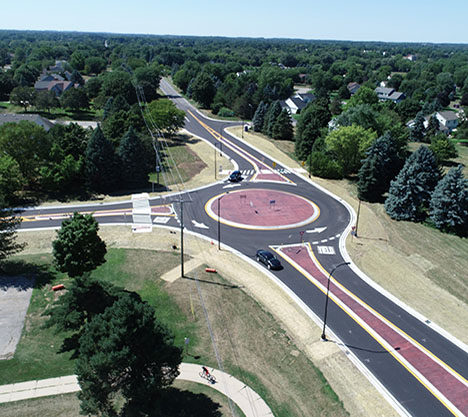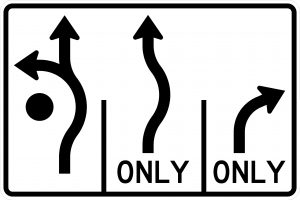Roundabouts have become common fixtures on Michigan’s roads due to their ability to enhance safety and reduce congestion. According to the Insurance Institute for Highway Safety, a modern roundabout provides a 39% reduction in total crashes and a 90% reduction in serious injury and fatality crashes.
It is important that motorists, bicyclists, pedestrians, and commercial vehicle operators understand the golden rules of traveling roundabouts:
- Yield and wait for a safe gap in circulating traffic before entering the roundabout. Do not merge into the roundabout like you would with a high-speed freeway entry ramp.
- Avoid changing lanes within a multi-lane roundabout.
- Do not stop inside the roundabout unless traffic conditions require you to do so.
- Use your signals to show others you are exiting.



 When approaching a multi-lane roundabout, look for the posted signs that indicate the correct lane to enter the roundabout. Selecting a lane in a roundabout is similar to selecting a lane at a traffic signal– right-hand turns generally stay in the right-most lane while left-hand turns generally select the left lane. Signage will tell you which lane to choose if you want to continue straight through the roundabout. Remember to use a turn signal to indicate as you approach your exit to let others know they can enter the roundabout.
When approaching a multi-lane roundabout, look for the posted signs that indicate the correct lane to enter the roundabout. Selecting a lane in a roundabout is similar to selecting a lane at a traffic signal– right-hand turns generally stay in the right-most lane while left-hand turns generally select the left lane. Signage will tell you which lane to choose if you want to continue straight through the roundabout. Remember to use a turn signal to indicate as you approach your exit to let others know they can enter the roundabout.